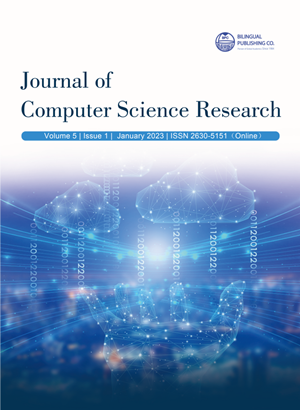
Outdoor Air Quality Monitoring with Enhanced Lifetime-enhancing Cooperative Data Gathering and Relaying Algorithm (E-LCDGRA) Based Sensor Network
DOI:
https://doi.org/10.30564/jcsr.v5i1.5383Abstract
The air continues to be an extremely substantial part of survival on earth. Air pollution poses a critical risk to humans and the environment. Using sensor-based structures, we can get air pollutant data in real-time. However, the sensors rely upon limited-battery sources that are immaterial to be alternated repeatedly amid extensive broadcast costs associated with real-time applications like air quality monitoring. Consequently, air quality sensor-based monitoring structures are lifetime-constrained and prone to the untimely loss of connectivity. Effective energy administration measures must therefore be implemented to handle the outlay of power dissipation. In this study, the authors propose outdoor air quality monitoring using a sensor network with an enhanced lifetime-enhancing cooperative data gathering and relaying algorithm (E-LCDGRA). LCDGRA is a cluster-based cooperative event-driven routing scheme with dedicated relay allocation mechanisms that tackle the problems of event-driven clustered WSNs with immobile gateways. The adapted variant, named E-LCDGRA, enhances the LCDGRA algorithm by incorporating a non-beaconaided CSMA layer-2 un-slotted protocol with a back-off mechanism. The performance of the proposed E-LCDGRA is examined with other classical gathering schemes, including IEESEP and CERP, in terms of average lifetime, energy consumption, and delay
Keywords:
Air quality; Cluster; Delay; Energy; Lifetime; WSNReferences
[1] Concas, F., Mineraud, J., Lagerspetz, E., et al., 2021. Low-cost outdoor air quality monitoring and sensor calibration: A survey and critical analysis. ACM Transactions on Sensor Networks (TOSN). 17(2), 1-44.
[2] Pramanik, J., Samal, A.K., Pani, S.K., et al., 2022. Elementary framework for an IoT based diverse ambient air quality monitoring system. Multimedia Tools and Applications. 81(26), 36983-37005.
[3] Alsaber, A.R., Pan, J., Al-Hurban, A., 2021. Handling complex missing data using random forest approach for an air quality monitoring dataset: A case study of Kuwait environmental data (2012 to 2018). International Journal of Environmental Research and Public Health. 18(3), 1333.
[4] Kumar, G., Agbulu, G.P., Rahul, T.V., et al., 2022. A cloud-assisted mesh sensor network solution for public zone air pollution real-time data acquisition. Journal of Ambient Intelligence and Humanized Computing. (IF 3. 662). 1-15.
[5] Lu, K.F., Wang, H.W., Li, X.B., et al., 2022. Assessing the effects of non-local traffic restriction policy on urban air quality. Transport Policy. 115, 62-74.
[6] Kim, J., Jeong, U., Ahn, M.H., et al., 2020. New era of air quality monitoring from space: Geostationary Environment Monitoring Spectrometer (GEMS). Bulletin of the American Meteorological Society. 101(1), E1-E22.
[7] Zhang, D., Woo, S.S., 2020. Real time localized air quality monitoring and prediction through mobile and fixed IoT sensing network. IEEE Access. 8, 89584-89594.
[8] Semlali, B.E.B., El Amrani, C., Ortiz, G., et al., 2021. SAT-CEP-monitor: An air quality monitoring software architecture combining complex event processing with satellite remote sensing. Computers & Electrical Engineering. 93, 107257.
[9] Karagulian, F., Barbiere, M., Kotsev, A., et al., 2019. Review of the performance of low-cost sensors for air quality monitoring. Atmosphere. 10(9), 506.
[10] Saini, J., Dutta, M., Marques, G., 2020. A comprehensive review on indoor air quality monitoring systems for enhanced public health. Sustainable Environment Research. 30(1), 1-12.
[11] Sumathi, J., Velusamy, R.L., 2021. A review on distributed cluster based routing approaches in mobile wireless sensor networks. Journal of Ambient Intelligence and Humanized Computing. 12(1), 835-849.
[12] Lakshmanna, K., Subramani, N., Alotaibi, Y., et al., 2022. Improved metaheuristic-driven energy-aware cluster-bajsed routing scheme for IoT-assisted wireless sensor networks. Sustainability. 14(13), 7712.
[13] Maheshwari, P., Sharma, A.K., Verma, K., 2021. Energy efficient cluster based routing protocol for WSN using butterfly optimization algorithm and ant colony optimization. Ad Hoc Networks. 110, 102317.
[14] Roy, S., Das, A.K., 2014. Cluster based event driven routing protocol (CERP) for wireless sensor network. International Journal of Computer Applications. 88, 6-11.
[15] Vaiyapuri, T., Parvathy, V.S., Manikandan, V., et al., 2021. A novel hybrid optimization for cluster-based routing protocol in information-centric wireless sensor networks for IoT based mobile edge computing. Wireless Personal Communications. 127, 39-62.
[16] Moussa, N., El Belrhiti El Alaoui, A., 2021. An energy-efficient cluster-based routing protocol using unequal clustering and improved ACO techniques for WSNs. Peer-to-Peer Networking and Applications. 14(3), 1334-1347.
[17] Mazinani, A., Mazinani, S.M., Mirzaie, M., 2019. FMCR-CT: An energy-efficient fuzzy multi cluster-based routing with a constant threshold in wireless sensor network. Alexandria Engineering Journal. 58(1), 127-141.
[18] Pavani, M., Trinatha Rao, P., 2019. Adaptive PSO with optimised firefly algorithms for secure cluster-based routing in wireless sensor networks. IET Wireless Sensor Systems. 9(5), 274- 283.
[19] Barzin, A., Sadegheih, A., Zare, H.K., et al., 2020. A hybrid swarm intelligence algorithm for clustering-based routing in wireless sensor networks. Journal of Circuits, Systems and Computers. 29(10), 2050163.
[20] Senthil, G.A., Raaza, A., Kumar, N., 2022. Internet of Things energy efficient cluster-based routing using hybrid particle swarm optimization for wireless sensor network. Wireless Personal Communications. 122(3), 2603-2619.
[21] Chanak, P., Banerjee, I., Sherratt, R.S., 2020. A green cluster-based routing scheme for largescale wireless sensor networks. International Journal of Communication Systems. 33(9), e4375.
[22] Dayal, K., Bassoo, V., 2022. Fast-converging chain-cluster-based routing protocols using the Red-Deer Algorithm in Wireless Sensor Networks. Applied Computing and Informatics. ahead-of-print. ahead-of-print. DOI: https://doi.org/10.1108/ACI-10-2021-0289
[23] Yadav, R.N., Misra, R., Saini, D., 2018. Energy aware cluster based routing protocol over distributed cognitive radio sensor network. Computer Communications. 129, 54-66.
[24] Dixit, E., Jindal, V., 2022. IEESEP: An intelligent energy efficient stable election routing protocol in air pollution monitoring WSNs. Neural Computing and Applications. 34(13), 10989- 11013.
[25] Agbulu, G.P., Kumar, G.J.R., Juliet, A.V., 2020. A lifetime-enhancing cooperative data gathering and relaying algorithm for cluster-based wireless sensor networks. International Journal of Distributed Sensor Networks. 16(2), 1550147719900111.
Downloads
How to Cite
Issue
Article Type
License
Copyright © 2023 Author(s)

This is an open access article under the Creative Commons Attribution-NonCommercial 4.0 International (CC BY-NC 4.0) License.




 G. Pius Agbulu
G. Pius Agbulu





